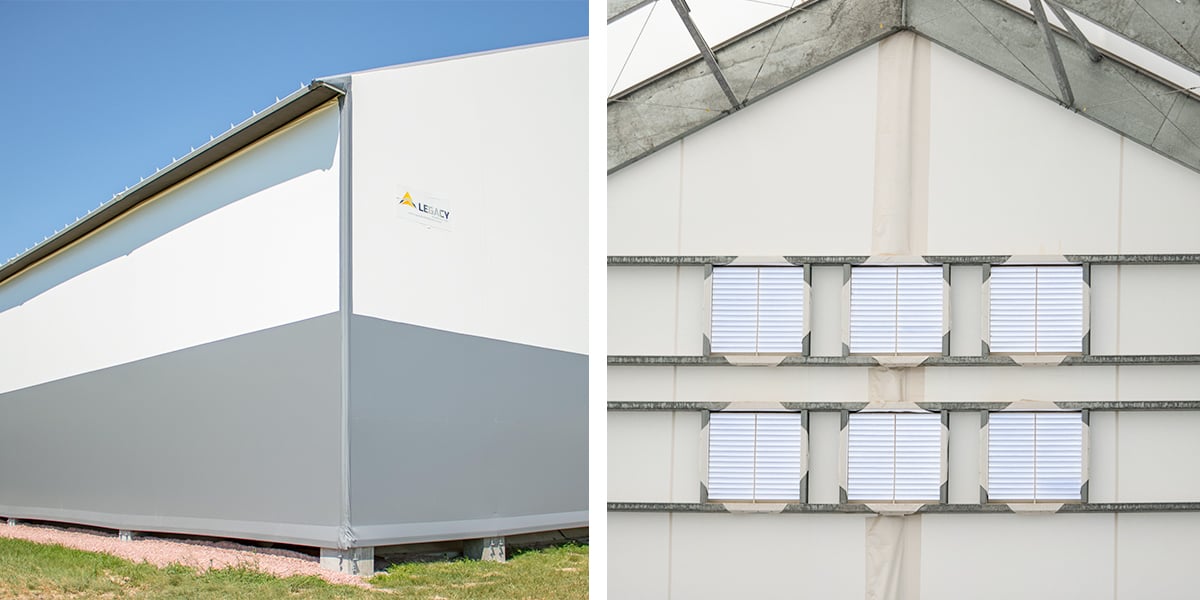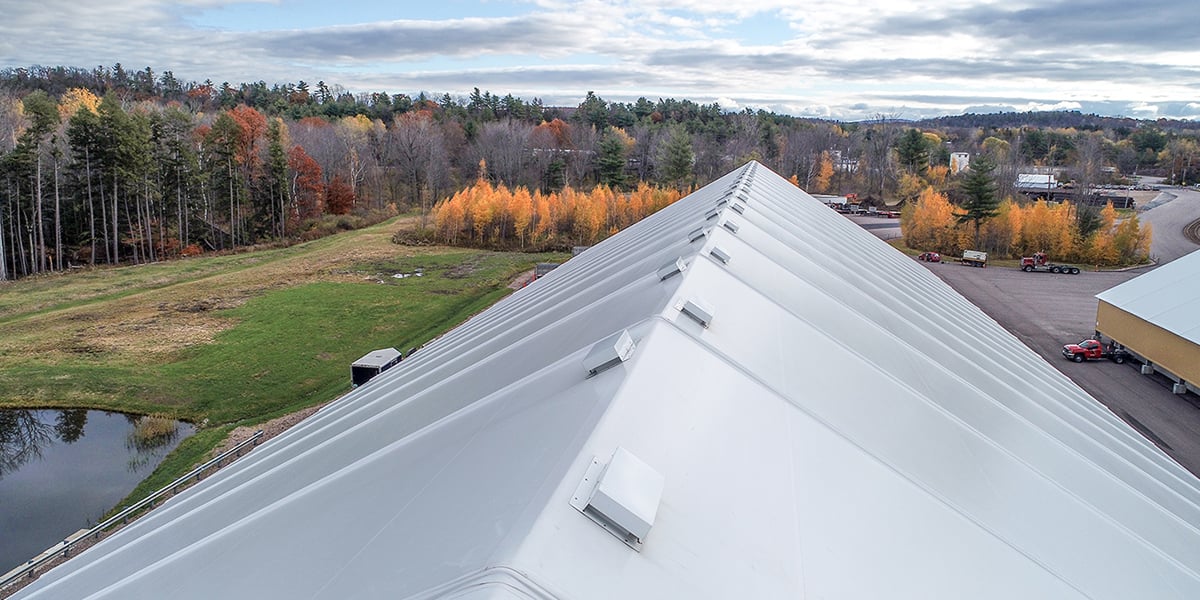Passive Ventilation Systems In Fabric Structures

What is Passive Ventilation?
Passive ventilation, also known as natural ventilation or gravity ventilation, uses air pressure differences due to height and gravity to pull air through a building, resulting in optimal air flow and improved air quality. Passive ventilation is an energy efficient option that requires no powered or “active” mechanical systems, thereby making it a sustainable, lower cost option.. A properly ventilated building reduces condensation and mold growth as well as creates a more comfortable work environment.
Methods of Achieving Passive Ventilation
The most effective passive systems use both cross and stack ventilation to achieve optimum air quality and thermal comfort.
- Cross ventilation requires inlets and outlets to pull air through the building. Generally placed on opposite sides of the building, the larger outlets draw air from the smaller inlets, using negative pressure to “suck” air through the building.
- Stack ventilation, sometimes called buoyancy ventilation, uses the natural convection of hot air rising to provide a flow of cool air near the floor of the building and exhaust hot air via outlets near the top of the building.
Passive Vent Intake Options
Soffit ventilation allows air to intake under the overhangs. Soffit ventilation has the advantage of air infiltration along both sides of the building, as well as the entire length of the building. Soffit intakes keep the infiltration closer to the occupied level of the building, keeping the occupants more comfortable. Soffit options range from completely open to mesh panels and vents.

Endwall ventilation uses mesh panels or aluminum louver vents to blow air in through one end and draw it out through the opposite endwall or sidewalls. Panels and louvers are used to adjust air intake, while the full cycle of air though the building is dependent on the force of the wind.
Some applications may require leaving one or more walls completely open to allow air to blow through the entire wall space, keeping plentiful fresh air inside the building.
Roof Vents for Passive Ventilation
Stack ventilation relies on warm, moist air rising to the top of a building and uses roof ventilation to exhaust air.
Roofs with open ridges leave the peak completely open, allowing hot air to exhaust out the entire length of the building, but also allowing precipitation and pests to enter through the ridge. This type of ventilation is most often used in applications like cattle barns, where maximum exhaust is more important than complete enclosure.
Peak vents consist of one long vent running the length of the building. Peak vents allow hot air to exhaust anywhere at the building peak while preventing outside elements from entering the building. Most peak vents are designed to blend in with the roofing material.

Roof vents, or ridge vents, are individual vents placed just below the peak on one side of the building. As the wind passes over the roof vent, it draws air out of the building, creating the desired air circulation of fresh air. Roof vents are available in high- and low-profile styles to provide the correct amount of ventilation needed while keeping rainwater and pests out. They are made of a long-lasting building material such as aluminum to reduce the exposure from harsh UV rays to increase the longevity of the vents, and the building, and come in a wide variety of colors and sizes to match the building roof.
Passive Ventilation Options in Fabric Structures
Fabric structures, like all buildings, perform better when they include a ventilation system. Some applications, including commodity storage buildings, cattle barns and waste processing buildings, require extra ventilation to keep products fresh.
Before starting construction, ask your fabric structure representative which type of ventilation is best for your use.
Subscribe to our Blog
Recent Posts
- 5 Factors Every Project Owner Should Consider Before Approving Building Materials
- The 20-Year View: How Material Choices Impact Long-Term Operational Costs
- Climate Resilience in Commercial Construction: Why Traditional Methods May Not Be Enough
- Speed and Quality: The Role of Hybrid Building Materials
- Beyond the Bleachers: Designing Visually Striking Sports Facilities
